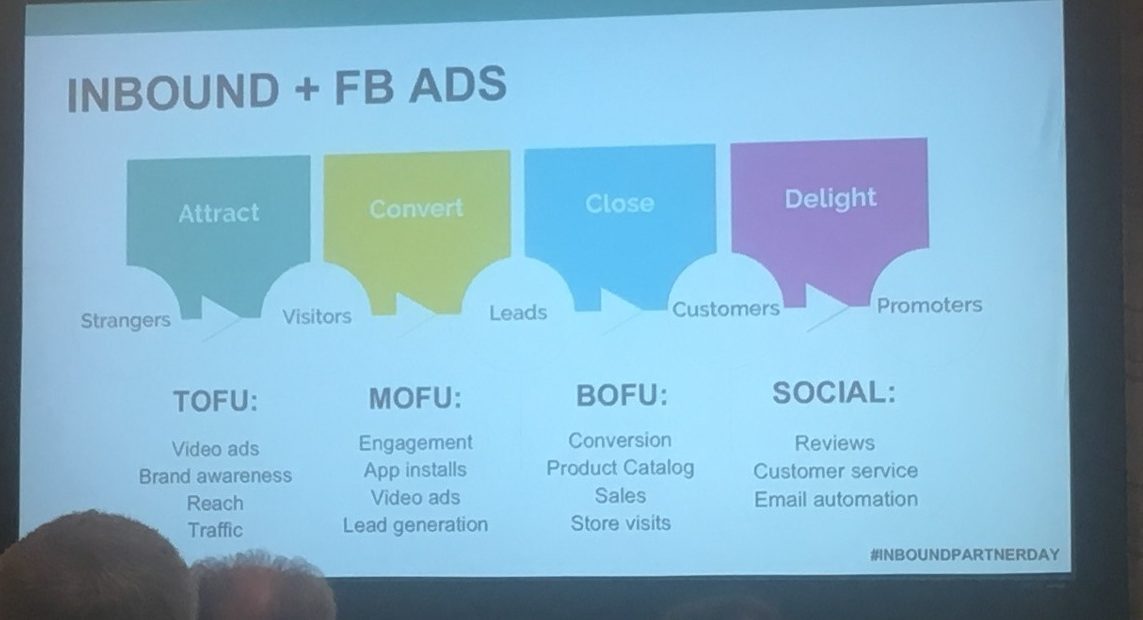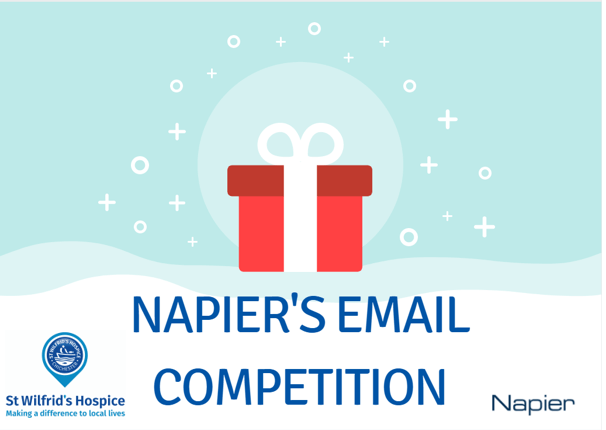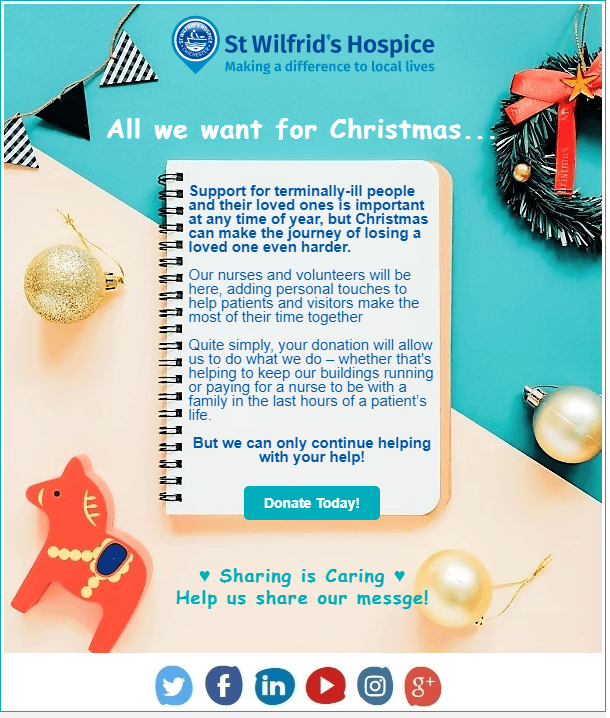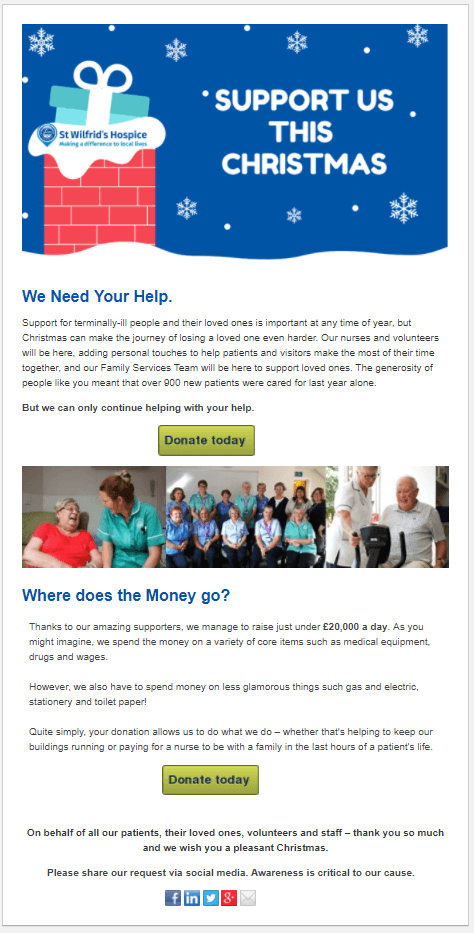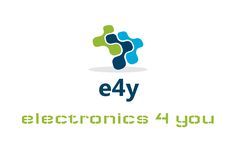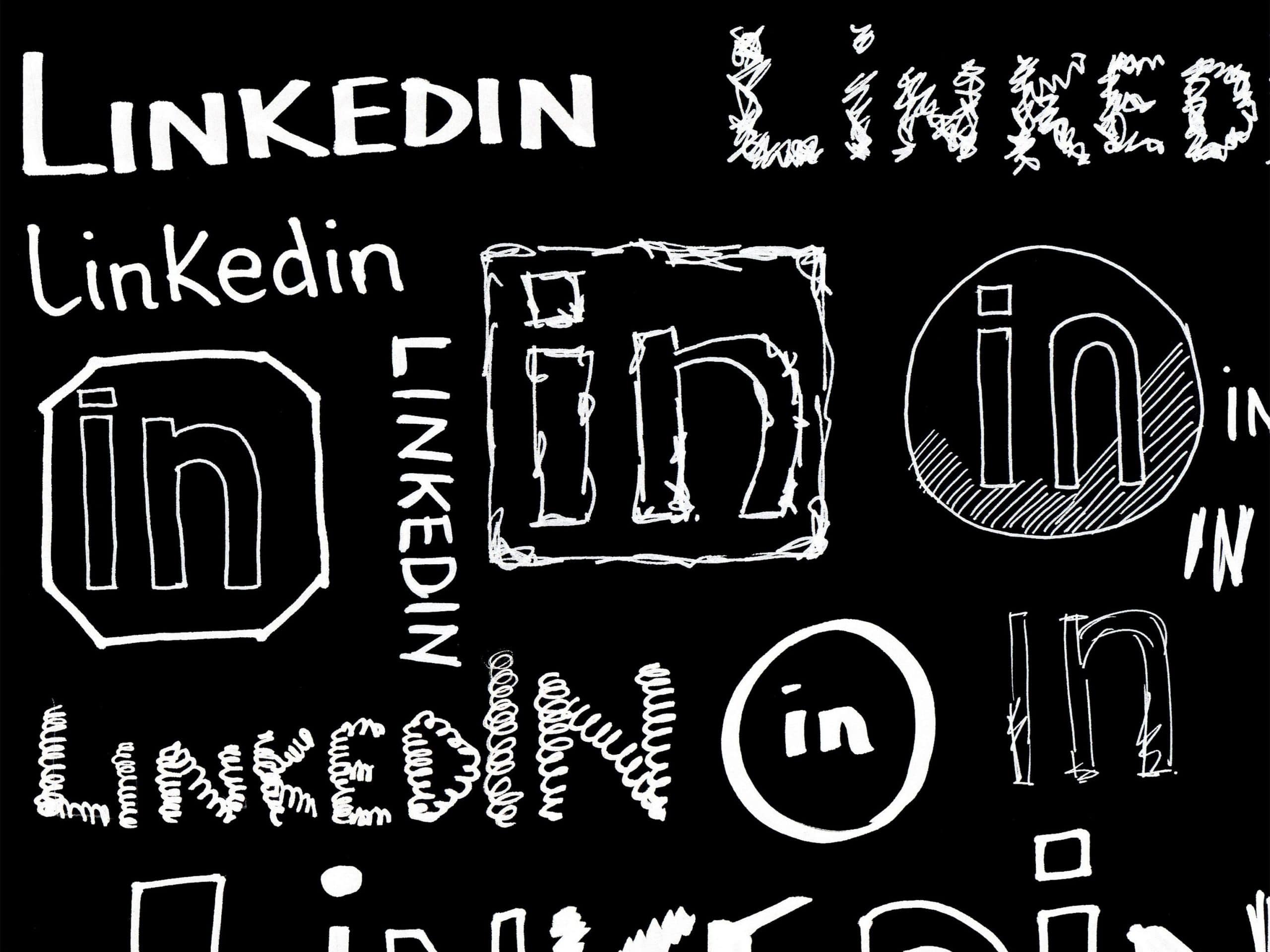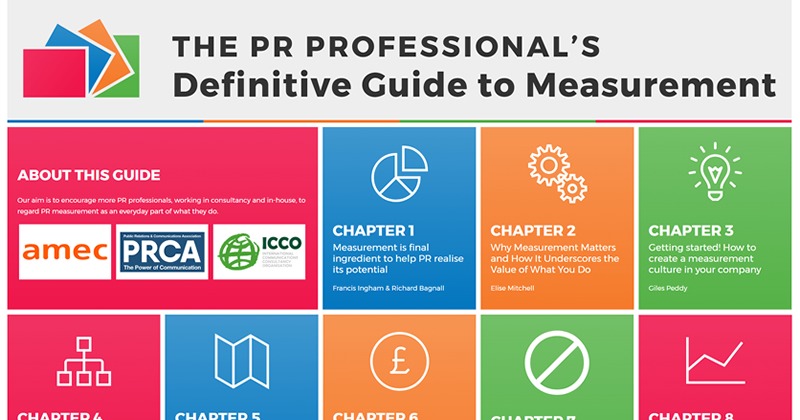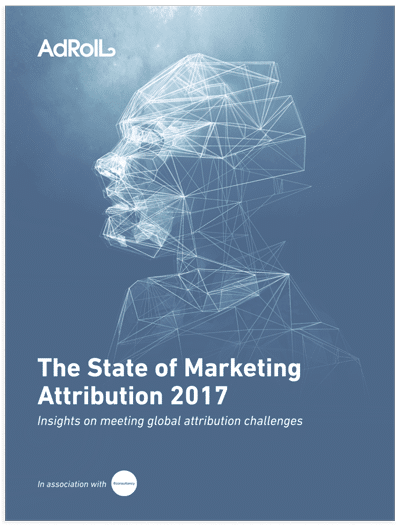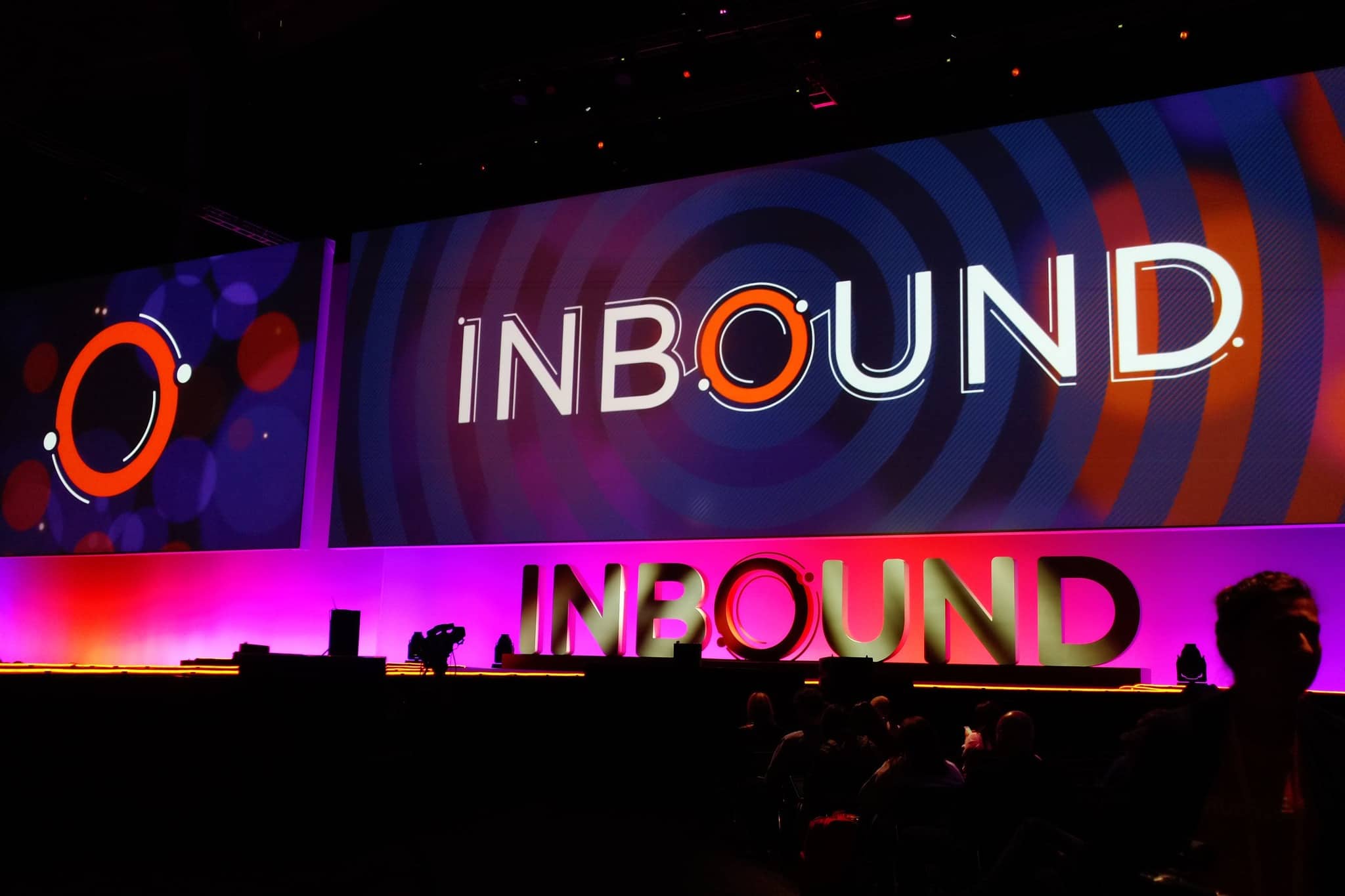New Electronics Appoint New Deputy Editor
Bethan Grylls will be joining the New Electronics team at the beginning of this year, as their latest deputy editor.
Bethan will make a contribution to all areas within the magazine, but will have a main focus on strengthening New Electronics’ web and social media presence.
This news is received with a bittersweet reaction, as it has also been announced that Graham Pitcher, consulting editor of New Electronics, will retire at the end of March in 2018. We will all miss Graham, who has been a mainstay of the UK electronics media for many years. We’re delighted, however, that his replacement will be Neil Tyler.
We wish them all good luck in their new roles and a happy retirement for Graham.
Napier’s Top 10 Digital Trends for 2018
It’s that time of year again, so as 2017 heads to a close, marketers are on the outlook for the newest and hottest trends heading into 2018.
At Napier we are no different, and this is why we have asked our experienced and knowledgeable team to tell us what they think are the key digital trends for 2018. We have narrowed down our list to our top 10 most important; to let you know what to expect and look out for in the B2B Tech industry when heading into 2018.
1) Account-Based Marketing:
Many companies, particularly those looking to gain specific high-value customers find that they are better served with an ABM strategy rather than taking a broad-reaching approach to their sales and marketing effort.
2) Personalisation:
For B2B, it will continue to be about “personalisation”, so delivering content to people based on the searches, preferences, media etc. As there is SO much information out there, companies need to look at how they can make their content hit home.
3) Form Filling
Although this may seem odd, with GDPR fast approaching companies will will want to ensure all their contacts have opted in to marketing communications. The number of contacts on their lists will likely decline – so expect to see more and more content hidden behind a form or two.
4) New Range of Technologies and Reusing Content
In 2018, we will see marketing continue to converge. With a range of new technologies - for example chatbots - and the need to reuse content the lines between different marketing disciplines and even between marketing and sales will be even more blurred than before.
5) Buyer Personas
There will be even more focus on buyer personas and the customer journey, allowing Marketers to educate themselves about their audience and target their marketing even more effectively.
6) Marketing Automation Workshops
Companies in more traditional engineering sectors will be thinking about marketing automation but likely will be unsure of how they integrate into their business. We expect that there will be strong demand for our Marketing Automation workshops.
7) Live Video Streaming:
Live Video Streaming is an effective way to engage and connect with customers. Using this feature will help to promote a more human side of anyone’s brand perception.
This platform can be effectively used for Q&A sessions, live events, behind the scene video content or interviews. There are a host of tools and apps which can help to promote Live Video Streaming (Most noticeably Facebook Live) and this trend is expected become even stronger and more interactive in 2018.
8) Customer Centric Marketing
Personalised campaigns, especially with regards to email marketing will continue to grow in popularity and become key to campaigns.
9) Chatbots
Chatbots will become a must have – As 2017 comes to an end Chatbots are already becoming extremely popular and important. By the middle of 2018 they will be widely used and vital in regards as a marketing technique.
10) Evaluating your Data
With all the data available there will be a drive for clear visibility of marketing performance. Analysis of data to produce useful insights will be even more important than even.
INBOUND Taught Me: How to Win in the ever-evolving world of Social Media
During the time we spent at the HubSpot INBOUND Conference 2017, we attended partner day. As proud partners of HubSpot, we joined other agencies for the day, where we learnt the latest news about HubSpot features, and attended special sessions, not available during the 3-day main event.
One session that stood out, and stuck with me was the ‘How you can Win in the New, Ad Powered, Video Driven, Ever Evolving World of Social Media’. Although a mouthful, the session covered many valuable points; offering advice on how you and your clients can stay ahead with Social Media, and how HubSpot has rethought its approach to social, to lead a new and more modern charge alongside their customers.
Daria Marmer from HubSpot, and Ali Parmelee and Dawn Barson from THINK Creative Group, were the key speakers throughout this session. Drawing from their own experiences, they discussed amongst themselves and to their audience about the way to approach campaign strategies with social in mind. The tips and information provided throughout this session is what I will share with you throughout the rest of this post.
Tips for Successful Social Media Posting
Whether we are aware of it or not, social media is beginning to drive and lead our campaign strategies, and with 30% of the world’s population on Facebook, companies are now selling their products through social media sites. Although organic reach on Facebook is very low, whether this is video, images or text. Paid traffic including banner ads, sponsored posts and boosted posts has been proven to be very successful.
The one problem companies are facing by selling through social media sites, such as Facebook, is that networks want people to stay on the platform rather than being redirected back to a website. There are many ways for companies to achieve this, by posting videos, or specific content, allowing companies to be able to target or retarget their audience without necessarily leading them back to their website.
Video has only become more important over the years, and today it is included in many campaign strategies, as it is considered greatly beneficial, whilst helping companies engage with their audience. Research has revealed that companies receive great engagement from their audience with videos up to 2 minutes, but often see a decrease in views in videos that are between 2 to 6 minutes long. Surprisingly, research has also revealed that the second ‘sweet spot’ where companies have seen increased engagement in videos, is between 6 to 12 minutes.
It seems the results for video engagement can vary, and often the best solution is to test, test and test again. Facebook Live is a good way to test engagement of video, and clients have previously been surprised to see how many people actually stay till the end of the video.
With 82% of Facebook’s revenue from mobile phones, a drastic difference from 10% in 2012. Companies also need to be aware of creating mobile ads which can successfully attract and engage their audience. Luckily, changes are being made to make mobile ads more effective for the B2B industry.
HubSpot and Social Media
As promised, HubSpot has rethought its approach to social, leading their buyer journey alongside their consumers social strategy. For example, when pairing their buyer journey with the Inbound approach and Facebook Ads, it presents a successful plan to ensure potential consumers convert. As you can see below, (a photo of a slide shown in the presentation) video ads, brand awareness, reach and traffic are all components of the attract stage, which are top of the funnel content and draw in strangers to look at your products.
HubSpot also presented a significant awareness in improving and paying more attention to the delight stage of their funnel. The use of the delight stage in the buyer funnel, partnered with a social media strategy, means converted customers can turn into promoters by writing reviews, or talking about their customer service online.
ROI Calculator
The HubSpot calculator has also been recently introduced, a new and beneficial tool for many B2B marketers. This ‘calculator’ was established to help marketers work out their advertising ROI. By inserting key figures such as your projected monthly budget and your expected CPC, marketers can work out an estimated return on their ad spend. This is key to HubSpot’s new approach to social, as they offer the opportunity for their consumers to take less risk when it comes to their social media strategy, as they can now work out the ROI for specific ads, such as key Facebook ads.
At Napier, we created our own version of a ROI calculator, why not try it out for yourself?
A step up with Instagram...
HubSpot also revealed a new publishing feature for their HubSpot social tools. As Instagram has become larger and more popular, the platforms influence is beginning to create a significant impact in the B2B sector. Following this rise in popularity, HubSpot has introduced a new feature called Instagram reminders.
This feature will allow customers to create and schedule photos and videos on the HubSpot platform. When the time comes to publish, a notification will then be sent via the HubSpot mobile app, and from there you can open the app, copy and paste the text into Instagram and publish. As Instagram does not allow direct publishing from a third-party to their network, HubSpot has introduced the next best step to handling the demand of Instagram, something many marketers were pleased to hear, and are looking forward to when this goes live.
HubSpot Leads Ad Integration
The final and arguably most noteworthy reveal of this session, was the announcement of the lead ad integration with Facebook. This update brings Facebook lead ad creation, tracking and lead sync to both HubSpot marketing free and paid. The integration is exclusive to Facebook lead ads, which were specifically built for an B2B audience.
The ads feature a strong CTA and use Facebook data to auto populate forms; and with the integration installed, immediately send leads to HubSpot. These lead ads are shown to the most relevant audiences across Facebook desktop, mobile app and Instagram. This integration not only offers a new and improved way to capture leads through Facebook, but also creates a place for the leads to land together and quickly be converted through HubSpot.
Why not take a look at other posts in our INBOUND 2017 Series?
- The Top 15 Things We Learnt at INBOUND 2017.
- INBOUND 2017 Taught Me: The Importance of Look-alike Campaigns
- INBOUND 2017 Taught Me: Topic Clusters
- INBOUND 2017 Taught Me: HubSpot Finally Reveals the Secrets to Achieving Explosive Success on LinkedIn
Napier’s latest Challenge – A Email Competition for Charity
*Competition Now Closed*
At Napier, we are a team of individuals who often jump at the chance for a challenge; and with Christmas fast approaching we decided to create a challenge with a twist, that would not only showcase our skills but also make sure we do our part and donate to charity.
Email marketing is an essential part of any marketers B2B strategy, with emails being the key way marketers make contact with their audience. At Napier, we are constantly testing out our own email designs, or helping our clients design and deploy their emails. We understand that every marketer is different, and they often have their own preferences when it comes to emails and their layout.
In light of this, we thought it would be interesting to run a competition, inviting professionals in the B2B Tech industry to decide which email design out of a choice of 3 they preferred.
With the challenge set, the next big step was deciding on the focus of these emails. We decided to take a unique direction, and test our skills by creating email designs for a local charity. St Wilfrid’s Hospice was an obvious decision, a local charity in Chichester who care and support people who are in the last phase of their life. As an agency, we also decided to do our part, donating to St Wilfrid’s as a thank you for letting us use their brand and promote their message.
Napier’s’ very own Fiona Challen, Emily Serna and Hannah Kelly took part in this challenge, with a brief to create an email that encourage new donors to donate over Christmas, as well as pass on the request or share their donations on social media. Voting will close on the 8th December and Winners will announced on the 11th December.
Each has taken a different direction with their email and it is now up to you to decide which one you think is the best:
Email 1:
Email 2:
Email 3:
HubSpot announces Data Centre in Germany
HubSpot has further proved its commitment to Europe this year, by not only opening a new Berlin office, but also announcing a new Germany based data centre for 2018.
HubSpot's findings from a recent survey has identified Berlin as the fastest growing tech city in Europe, with a vast majority of respondents positioning the city as a growing hub for startups and tech companies.
The survey was conducted on consumers who live and work in the Berlin Metro area, and a massive 95% of respondents confirmed that they see the number of technology jobs in the city growing; whilst 90% said Berlin also offers access to the technology and digital talent needed to grow a tech company.
As Berlin continues to grow, it is no surprise that HubSpot has decided to place roots in the city. President and COO of HubSpot, JD Sherman stated "Opening an office in Berlin is a smart choice – from the wealth of local talent to its growing digital infrastructure, the city offers a great opportunities for us to continue HubSpot’s growth across Europe".
The announcement of the opening of a Germany-based data centre in 2018, also strengthens HubSpot's foothold in Berlin, with the company to rely on a facility in Frankfurt to store customer data according to EU legislation. The new data center will provide redundancy as well as outage and data protection for HubSpot customers. Both marketing automation and HubSpot are doing well in Germany and this is one of the reasons why Inbound marketing is a great way to run permission-driven campaigns.; and with HubSpot's new announcements this is bound to continue being successful.
With this being the 2nd European office HubSpot has opened, it is clear to see that HubSpot are serious about proving their commitment to Europe. As the company continues to grow, they provide benefits to Berlin also, promising to create 75 new jobs over the next three years to meet the rising demand for HubSpot’s software solutions in, and the rapid growth of the DACH market.
INBOUND Taught Me: How to Overhaul Lead Nurturing and Double Conversions
Throughout my time at INBOUND 2017, I spent a lot of time listening about HubSpot’s (rightly so) ‘awesomeness’. This is why it was almost refreshing to attend a presentation where HubSpot admitted to their mistakes, and presented to us a journey of how they overcame their challenges.
The presentation in question was held by HubSpot’s very own Senior Marketing Manager Laurie Aquilante, who discussed the challenges HubSpot faced within their marketing funnel, and how they re-invented their approach to overhaul lead nurturing and double their conversions.
Laurie explained how HubSpot were failing with their lead nurturing. They were overloading prospects with too much information and were not achieving the high number of conversions they were aiming for. To gain a greater sense of what they were doing wrong and how to improve, HubSpot narrowed down their problems to three main challenges to overcome:
- HubSpot’s lead nurturing content was too educational. They were so busy promoting educational content, that most of their prospects didn’t realise that HubSpot sold software.
- HubSpot were failing to move people along their buyer’s journey.
- At no point in the funnel did HubSpot introduce a human connection.
With these challenges in mind, HubSpot decided the best way to move forward was to collect information about their prospects first. They formed a survey which asked their audience what they wanted, when they wanted to be approached in the funnel and what could help their experience.
By collecting this information, HubSpot essentially ‘got to know’ their prospects, and were finally equipped with the right information to attract their audience. The survey revealed that their prospects wanted to speak to a salesperson at the consideration stage of the buying process, while 61% of respondents believed their customer experience could be more positive if sale representatives provided more relevant information.
Equipped with these new insights, HubSpot made changes to not only overcome the challenges they were facing, but also their approach on how to nurture prospects through their marketing funnel.
HubSpot made three key changes to their approach:
- They introduced a human connection. HubSpot introduced ‘Edward Gahr’ an Inbound Growth Specialist, an expert who answered questions and provided faster replies to prospects. This achieved an increase of an 40% conversion rate.
- They personalized based on need. Rather than guessing what their prospects were interested in, HubSpot actually asked what marketing or sales challenges their prospects were facing. Through one simple email, which guided HubSpot to provide the right content to the right person; a 50% increase in workflow conversions was seen, and 172% increase in higher engagement.
- They found new ways to connect with their audience. HubSpot offered their audience a chance to sign up to a webinar through Facebook messenger by their HubSpot chatbot. This saw an increase in engagement between HubSpot and their prospects, with many praising HubSpot for the original way they were connecting with their audience.
Conclusion: Even HubSpot can Improve Lead Nurturing:
It is comforting to realise that even HubSpot has made errors along the way, and that attaining the ‘perfect’ way to achieve successful lead nurturing, takes practise and hard work. From this presentation, I learnt that overhauling leading nurturing and doubling your conversions isn’t easy. But if you understand your buyer intent and fit, provide helpful education, and test, change, and test again; you’re definitely heading in the right direction to achieve it.
Why not take a look at other posts in our INBOUND 2017 Series?
- The Top 15 Things We Learnt at INBOUND 2017
- INBOUND 2017 Taught Me: The Importance of Look-alike Campaigns
- INBOUND 2017 Taught Me: HubSpot Finally Reveals the Secrets to Achieving Explosive Success on LinkedIn
- INBOUND Taught Me: How to Win in the ever-evolving world of Social Media
Name change again for eeDesignNews!
Earlier this year, in April, EDN Europe rebranded as eeDesignNews. Now eeDesignNews is to become eeNews Embedded. We are saddened to say however that the re-brand has been inspired by Graham Prophet’s decision to retire. Graham has had a very successful career in journalism providing readers with his extensive range of knowledge and insight. We are disappointed to hear this news, but we wish him the best in his new life ahead, and hope he gets some well-deserved rest. Although we hope he continues to enjoy and express his passion for the industry in whatever way that may be.
We are however thrilled to announce that as of January 1st Ally Winning will be filling the shoes of Graham as the new editor in chief! This is a big position to fill but with Ally’s 17 years of experience in the technology industry but we have every confidence he is going to thrive in his new role.
eeDesignNews closed the door on print back in 2009 and moved solely to the online version – well print is back! When eeNews Embedded releases its first publication under this title, we will all have the privilege of receiving a print version, which will be distributed at embedded world. It’s interesting to see a print title launch (even as a supplement to another print title), and it is clear that print titles are still in the position to make money, and EBP are great at making money from this “old” approach to distribution.”
We look forward to the rebrand and can’t wait to see what eeNews Embedded has to offer in 2018.
Clarification of Alistair Winning's Editorial Roles
We thought it would be worth putting in a clarification about Ally's editorial roles. The fact he has replaced Graham does not change his position as Editor-in-Chief at PSDE. Both sides are aware of the other role, and as they are not competitive both publishers were happy for Alistair to hold both positions.
productronica 2017 reports 20% increase in visitors
productronica 2017, held in Munich this November, has presented growth for the electronics production industry.
The event saw an increase in attendees, with 44,000 visitors from 85 countries attending the show, almost a 20% increase from the last productronica. Over 1,200 exhibitors presented innovations from the fields of electronics production and development, with focus on topics such as the IoT, as well as big data and miniaturization. Special shows including subjects such as ‘Smart Data-Future Manufacturing ‘and ‘Hardware Data Mining’ were also present, providing productronica with the opportunity to present the industry’s latest innovations in smart technologies.
Rainer Kurtz, Chairman of productronica’s Technical advisory and CEO of kurtz ersa, stated that productronica has confirmed the growth forecast for the industry, expressing how “The great interest in smart technologies shows that digitalization has finally arrived in the electronics manufacturing industry.”
With a sharp rise of international visitors this year, it is clear that productronica has made a positive impact on the industry. As new trends in the industry spilled over to productronica, many were keen to take advantage of this growth and to keep the momentum of these trends going.
Many are calling Munich the ‘world’s hotspot for electronics manufacturing’ after productronica 2017, and it will be interesting to see how the next productronica will reflect the ongoing progress of the industry.
MMG Publishing to launch E-BOM
MMG Publishing has been busy developing a brand-new electronics industry website, E-BOM, which they plan to launch early in the new year. The new site will be a standalone product that complements their successful Electronics Sourcing portfolio.
In preparation for the launch, MMG is requesting copy from electronics suppliers, and in return they will provide 3 months’ free of charge of exposure on the new site from the time of launch.
If you would like to be involved and submit your advertising copy, please email news@ebom.com by the 24th November.
The Hitex ARM Conference returns for 2017
The Hitex ARM conference has returned for another year, and will be held on the 23rd November at Hilton Warwick.
The conference will focus on the next wave of Cortex-M microcontroller technology, including development for multicore devices and offers the opportunity to spend up to three days immersed in productive technical and educational environments.
The opening keynote will be delivered by Tony Smith, General Product manager, who will deliver the latest changes within ARM in the last 12 months, and how this has affected the development of ARM microcontrollers in terms of software, system trends and technologies. Other keynote speakers will include Joseph Yiu, a senior Cortex-M specialist for ARM, and Elan Tanzer, Senior Product Manager, who will present the ARM Developer Studio 5 toolchain with support for heterogeneous multicore systems.
Further presentations will include the latest innovative developments from key Silicon vendors and leading software providers who will cover the latest hardware developments and practical software techniques. Interestingly, Hitex ARM have decided that all presentations will be technology based, to ensure every visitor will leave having gained real knowledge and value from the day.
With a focused one-day conference and two days of highly-regarded training, where visitors can sign up to courses, the conference aims to give their visitors excellent value on their investment in terms of time and knowledge.
Hitex ARM conference is free-to-attend, and promises to be a conference filled with an informative and packed agenda.
To find out more information please click here.
E4Y Electronics for You no more. It’s now Hypes
Antonio Cirella officially launched E4Y earlier this year, the magazine based on the popular Scoop.it platform, which they use to create a multi-channel collaborative magazines. Antonio has decided to change the name from the original E4Y due to a publication with a similar name in India.
The publication wanted to become more distinct, so has rebranded as HYPES.. “ Antonio has decided on the name HYPES to reflect the hype around the new technologies such as Blockchain, digital transformation, the Internet of Things and electronic components that he will be covering with daily stories on HYPES Scoop.it site.
The DPN Release Guidelines to Justify Processing of Data under the GDPR
The Data Protection Network (DPN) has released guidelines around the use of Legitimate Interests to justify processing of data under the EU’s General Data Protection Regulations (GDPR). These guidelines have been supported by the UK Information Commissioners Office and the Data Protection Commissioner of Ireland, but as we’re not lawyers please do take proper legal advice (although we can’t believe anyone would really trust legal “advice” from a PR agency).
The GDPR has set out 6 lawful grounds for processing personal data. Along with consent, one of the most important grounds is the “Legitimate Interests”. As one of these legitimate interests is processing data for direct marketing purposes, this is an important topic for marketers.
Although processing can be necessary for the legitimate interest pursued by the controller or by a third party, there are interests which can be overridden by the interests or fundamental rights and freedoms of the data subject. So it’s not possible for an organization to simply cite direct marketing as a legitimate interest and carry on processing data for this purpose without any impact from the GDPR.
There are 3 stages that organizations must go through to assess whther a legitimate interest applies:
- Assess whether the legitimate interest exists
- Establish whether the particular processing activity is essential for the pursuit of the legitimate interest(s)
- Perform the balancing test to decide whether a particular processing activity can be undertaken on the basis of the legitimate interest’s condition.
Transparency is also a key part of the GDPR. So even if a legitimate interest applies, organizations must fulfil GDPR’s enhanced transparency requirements: they must inform individuals when the process is being undertaken on the basis of legitimate grounds and what they are. The individual(s) then have the right to object to any process being undertaken on the basis of the legitimate interests’ condition. The DPN has suggested taking a more layered approach, with a click through to a more detailed information on the legitimate interests ground. It was then suggested that more innovative businesses may want to take advantage of privacy enhancing tools, such as adding branded logos, videos and dash boards.
Although more businesses are focusing on the legitimate interests ground to justify certain activities as consent is hard to obtain under the GDPR, legitimate interests grounds still requires a careful thought process and it’s important to document the analysis as part of an organizations compliance story.
Each individual still continues to have the right to object any personal data being used, and although businesses may be able to override this on the basis they can show compelling legitimate interest it’s unlikely that direct marketing will trump an individual’s objection. So it’s essential to allow subjects to opt out easily, and provide capabilities to erase their data.
The GDPR have suggested that organizations should all aim to process data for activities that are in a controller’s or a third parties legitimate interests and benefit individuals. The orgnaisations should explain the benefit to the data subjects; for example to ensure that they are shown adverts for products or services they might be interested in. Organizations need to positively enable individuals to choose not to have their personal date used in a certain way, such as brand friendly privacy dashboards. They should also ensure they have the technical means to act on an individual’s objection.
Disclaimer: We’re not lawyers, so please do not take any of this information as legal advice. Hopefully it gives you some ideas, but please do consult with trained legal professions, particularly as it looks like some of the GDPR will be open to interpretation by the courts.
INBOUND 2017 Taught Me: HubSpot Finally Reveals the Secrets to Achieving Explosive Success on LinkedIn
Throughout my time at INBOUND, I attended several conferences surrounding a variety of subjects. This varied widely from ABM to lead nurturing, and although admittedly a few of these conferences were slowly forgotten, there were many which made a significant impact.
This included the presentation on creating explosive success with content marketing on LinkedIn. Undeniably I did arrive slightly skeptical, wondering whether this talk would be truly helpful, or spout the same thing we’ve all heard before. In fact, I was amazed at how helpful and informative the presentation was, and I left with a whole new view on how to approach content marketing on LinkedIn in the future.
The presentation in question was held by Viveka von Rosen, co-founder and Chief Visibility Officer of Vengreso, the largest full spectrum digital social selling provider in the world. Viveka is also known as a contributing expert on LinkedIn, with over 10 years of LinkedIn experience.
Viveka began with the obvious, highlighting how LinkedIn publisher helps build engagement, and revealing the most popular type of content people share on LinkedIn. These included:
- ‘How to’ Posts
- Posts with ‘Tips’ in the Title
- Top Ten Lists
- Research Focused Posts
- Infographics
This type of content encourages the audience to share, read and most importantly take notice. A new feature on LinkedIn has also increased the chance of engaging your audience, with the announcement of the LinkedIn video feature. Although it is only available via mobile phone, this new feature is bound to increase engagement, not only within the B2C sector but the B2B industry as well.
After this encouraging news, I sat with my pen in hand, ready to learn the tips needed to improve our content marketing on LinkedIn, and more importantly how to implement them to ensure success.
Customize your Content
Customizing your content is vital to engaging your audience. Without knowing the interests of your targeted audience your content could be missing all the right spots.
Correcting this is simpler than it may seem, by purely asking what your audience wants. Whether this is through an update, email, or on your social media channels, this is a good way to grasp what content your audience is searching for.
Fortunately, this doesn’t mean all content needs to be created from scratch. Often existing content can be altered or updated and used again, a clever way to get the content you need uploaded on LinkedIn as soon as possible.
Article Writing
When publishing on LinkedIn publisher, it can be hard to know whether your article is going to be a success. These tips will ensure you will never have to worry again:
- Larger articles with words between 500 – 10,000 are in fact the most popular.
- E-books are a big hit on LinkedIn, with bigger articles published having achieved more success.
- Call-to-actions are vital within an article. They give clear guidance to the reader of where they should go next or where they can learn more.
- Use Cohesive and Strong visuals. This will instantly draw attention to your article.
- An additional bio at the bottom of your article is significant. Providing information about yourself and your company, means you offer crucial information to your audience, making it easy for them to contact you with any questions.
- Post your article on LinkedIn Publisher but also as a normal LinkedIn post. By changing the introduction and conclusion on one post, you technically have two different pieces of content which gets double the exposure.
Share, Share, and Share Again
HubSpot also revealed a ‘Ninja Trick’ for achieving explosive success on LinkedIn for content marketing.
One of the main benefits of LinkedIn, is that there is no limit to the amount of times you share your posts. One of the best things you can do for your content is share and then share again. For both articles and normal posts, it is highly recommended to share as many times as you see fit.
The sharing doesn’t have to stop there though. On LinkedIn once you have published your article, you can click on the article and copy the URL from the pop up window. This allows you to take the URL to other social networking sites such as Twitter and Facebook, and promote your article through posts on these sites.
This ‘Ninja Trick’ provides the opportunity for you to increase the awareness of not only your content but also your company and what you represent.
To Conclude…
At Napier, we take immense pride in our LinkedIn page, and work hard to ensure we are continually improving. After attending the HubSpot INBOUND event, and in specific this fantastic presentation, we are excited to begin putting these tips into practice and watch the Napier LinkedIn become even more successful.
Why not take a look at other posts in our INBOUND 2017 Series?
- The Top 15 Things We Learnt at INBOUND 2017.
- INBOUND 2017 Taught Me: The Importance of Look-alike Campaigns
- INBOUND 2017 Taught Me: Topic Clusters
- INBOUND Taught Me: How to Win in the ever-evolving world of Social Media
Vector's Anna Barcelos - Marketing Expert Interview
Anna Barcelos, Director of Marketing at Vector Software, is the latest marketer to have been interviewed for our marketing expert series. As a marketer who has more than 25 years of experience in marketing, we were looking forward to getting to know Anna a bit better; asking her a range of questions:
- What do you like to do in your spare time/hobbies?
I am a very family-oriented person and spend a large portion of my time taking weekend trips to games to watch my son play football. My daughter is currently a senior at high school and so we are also using up a lot of time looking at colleges.
For myself, I like to keep healthy and try to go kickboxing at least 3 times a week. I also like to keep up on technology trends and read as much as I can.
- What football team do you like?
I am a huge fan of the Real Madrid team. I was born in Portugal in the same town as Cristiano Ronaldo, and soccer was always on while I was growing up, so I definitely root for the Real Madrid team. But out of loyalty, as someone who lives in New England I am also a big supporter of the Patriots for “American football.”
- What other career would you have chosen if you weren’t in marketing?
I have been a “purebred” marketer since day one, and have enjoyed over 25 years of experience in marketing, as it has been continually changing and evolving. However, if I was to choose another career I would want to be a data scientist.
Data fascinates me, and I love the notion of collecting huge amounts of information, and taking this information to be analysed and manipulated in order to create different models that could help companies become more successful.
I would have also liked to be a software developer. At the moment, it’s all about software and the importance of this career is only going to increase with time. Ideally, I would double major in both subjects to become a data scientist and a software developer.
We also asked Anna a variety of marketing questions, looking to find out Vector's biggest marketing challenge, as well Anna's future insights and opinions of effective marketing activities and best campaigns:
- What do you think have been the biggest changes to B2B marketing in the past 3 years?
In the past three years, data has become more and more prominent, with marketing automation tools allowing companies to take advantage and find ways to utilise data. The increased use of intelligence data and automation tools to create personalized experiences along the customer journey, is one of the biggest changes I’ve seen to B2B marketing.
I recently read a great report done with Google* which explored how leading brands are investing in a “first-party” future, that is using the data they’ve collected on their customers and creating individualized experiences. Within the report there is a discussion on artificial intelligence and the impact it will have on marketing in the future. The report proposes that the use of artificial intelligence through machine learning will grow, to more accurately predict and provide customers with instant, personalized experiences along their buying journey. As a marketer myself, this is something I fully agree with and what I see for marketing in the future. Exciting!
*An Audience of Individuals, 2017 Econsultancy and Google
- What do you think will be the biggest change in the way you approach your campaigns in the next 3 years?
In the next 3 years, I believe the biggest change in the way we approach our campaigns will be through our marketing expertise. Having people with digital capabilities who can create these online strategies will be essential. With the increase in data and the need to utilise it, we need data-driven people who are a cross between marketers and data analysts.
The challenge will lie in trying to find the people who have this added layer of expertise, as well as the resources to create and implement these campaigns.
- What are your biggest marketing challenges?
The biggest challenge we are facing at Vector today is the new GDPR regulation which is to be set into place next year. As a global company, data compliance is going to be challenging, and we need to have a strategy ready for this. Email campaigns will also be a challenge with this new regulation; knowing how to set them up and position them, while ensuring our database is compliant and clean.
- Describe the future of trade media – will it thrive or are there problems ahead?
Within the trade media, as with any company, lots of innovation needs to be done there. Trade journals are still very traditional and I firmly believe that if you don’t innovate you die. They really need to increase their use of digital channels, although it is hard with both Asia and Europe still using traditional ads.
From our own personal experience, we don’t advertise in trade journals as there is no ROI for us there. Instead we utilise digital campaigns such as syndicated content to gain leads, while advertising in trade journal e-newsletters.
I believe large media companies do need to innovate and have a long way to go. Although the modern day does have a traditional touch, trade journals who don’t have digital expertise, need to hire expertise to ensure they don’t fall behind with the times and continue to develop. It is critical that trade journals know how their customers consume media and do not get left behind.
- What do you think is the most effective and least effective marketing activity you, or your company undertakes (in terms of ROI)?
Success for Vector is measured through revenue, and so for Vector, trade shows are our least effective marketing activity. We still attend trade shows as a company, but limit ourselves to the amount of trade shows we attend. There is great value in face to face interaction and relationships created at trade shows. However, in terms of ROI, the cost versus business generated makes trade shows our least successful activity.
Our most successful activity comes from our website. This is our top lead generator with the highest qualified leads. Our web marketing efforts, such as utilising all our channels including social, organic search and Google AdWords are among our most effective marketing activities.
- What is the most over-hyped marketing tactic?
I am a huge fan of social media, yet I still believe it can be over-hyped. Making social media more quantitative in B2B is a challenge. You’ll have the greatest success by setting specific goals and measuring key KPIs including engagement, reach, leads, and conversions. Facebook, Twitter and LinkedIn have been around the longest and can be extremely valuable. Social media needs to be taken seriously, starting at the top. If there is no management buy-in on its value, chances for success at your company are slim.
- What was the best campaign you’ve run?
Personally, the best campaign I’ve run was at a CRM technology company. We worked directly with the sales team to create email campaigns. We created two B2B email lists (one with first-party data and the other third-party to supplement our database) and sent a series of emails with the main goal of setting up demoes for our sales team. We ran the campaign for a couple of months, and there was a huge increase in requests for demos. It is one of the best campaigns (with a very basic goal) and cost-effective campaigns I’ve ever run.
With reference to Vector and our campaigns, email marketing remains our most successful and cost-effective channel. We have increased our internal capability to create more personalized, automated email programs to nurture leads along the buyer's journey and provide the highest qualified leads to our sales people.
- If there is one thing you could change about the electronics press, what would it be?
I would like to gain more analytical insight. If the electronic press used more tools to analyse their data and be a bit more proactive, they could provide more analytics to their customers and help them optimise their campaigns. I think companies would be appreciative of this.
- If there was one thing you could change about how agencies work with you, what would it be?
Personally, I would like more day to day interaction. I understand it can be hard, but working closer with each other, means the relationship could be more personalized. Napier is awesome, but agencies generally could be more pro-active and be a step ahead of us, thinking of things we haven’t yet thought about, just one step. Whether through a campaign or resource, agencies should be more pro-active and persistent.
- Can you explain how you define and measure success for your campaigns?
We try and implement most of our campaigns through digital channels because they can be measured. We track ROI from marketing leads that turn into opportunities and sales.
Our main aim, as probably with most companies, is to generate marketing and sales qualified leads (MQLs/SQLs) that have the highest probability of turning into sales.
Paul Boughton - Moving on from Engineer Live
As of the end of October Paul Boughton will be moving on from his time with Engineer Live, where he held the role of online editor. Paul has now moved on to a new and exciting project, and is currently putting together a new website called Engineer News Network. It is still in the process of construction, but we will be excited to see the finished product.
The website is a platform to discover the latest engineering news, events and designs. Paul says he’s keen to find his niche in the market and we look forward to seeing what he creates. Since setting up the website Paul has already seen a large variety of traffic coming from 37 countries, which is a great start.
We wish Paul the best of luck in his new venture and look forward to seeing what the future holds for Engineer News Network. Great to see Paul taking a leap of faith and setting up a new business.
The PR Professional's Definitive Guide to Measurement
At Napier, we are always looking at ways of measuring our PR campaigns to ensure they are effective; so we use a range of tools to make sure that we don’t miss anything! We believe evaluation is very important, and ultimately the key to producing a successful campaign.
AMEC, ICCO and the PRCA have combined their extensive knowledge on campaign evaluation and produced the latest edition of the definitive guide to public relations evaluation. The guide is available on all platforms including tablets, phones and PC. The guide they produced is a very effective tool for PR professionals, to measure and demonstrate the success of their campaigns.
The guide will ensure that PR professionals globally are all striving in the same direction and aiming to meet the same expectations. We are strong believers that if you aren’t able to measure something how can you be sure it was successful?
The AMEC framework ensures that you plan campaigns in a way that produces measurable goals and targets as well as showing the impact to the campaign will have by measuring what is most important. Using the framework to understand your brand and the objectives that you want to achieve will put you on the right path.
For a more in-depth insight about the framework and its effectiveness in measuring success visit the PR Professional’s Definitive Guide to Measurement.
Two Events to Take Place in Germany
The Wireless Congress: Systems and Applications event is taking place in Munich from the 15th-16th November this year. The Wireless Congress shows the importance of “wireless” in electronic development alongside the magazine Elektronik and the German Electrical and Electronic Manufacturers’ Association.
There is a large selection of technical topics that will be addressed by this year’s event with a range of presentations and tutorials.
In other news, the European Frequency Control Congress and Exhibition is coming up on 21st November also taking place in Munich. It’s an internal one day event that will help deliver information on advances, trends and the latest scientific research into frequency control products, and the way they are industrialized and applied. Throughout the day an extensive range of tutorials will be held in both German and French, with even the most specialized topics being covered. The conference wants to provide knowledge for everyone in the industry from novices to those with a huge range of experience, there is going to be something for absolutely everyone at the conference.
The exhibition will provide space for exchanging knowledge. Everyone is welcomed to this part of the day; it is the prime environment for you all to share experiences and present your product(s) to your potential clientele.
What's New in Electronics Live to Co-locate with 6 Other Industry Events
As of 2018 it has been decided that What’s New in Electronics Live will co-locate with 6 other industry events to create what the organisers hope will be “the ultimate electronics trade show”.
From 2018 we will see some rather big changes to the show. Over the years the What’s New in Electronics Live delivered a popular exhibition in the UK. Although WNIE has suggested that in previous years they have noticed a slight decline in the industry, they are not allowing this to stop them.
What’s New in Electronics Live conducted research which has now resulted in them making the decision to join forces and present a 2 day show from 25th-26th September, taking place at the Birmingham NEC with EMC UK; Embedded Live; Sensors and Instrumentation; Micro Nano MEMS; PPMA; and the TCT show. By collaborating together they will ensure they provide visitors and exhibitors with a more diverse range of platforms and networks than any other trade show. The collaboration seemed inevitable for WNIE as Sensors & Instrumentation and Micro Nano MEMS have several shows for the electronics sector. On the day, you can expect to take part in workshops and conferences, seminars, and panel discussions.
Claire Saunders the event director said "We believe that these events are an incredibly strong complement to WNIE Live. Among many other benefits, it will improve our attendee numbers with the type of audience that will have purchasing influence or decision for your products and services. Our key aim is to deliver a strong event for the UK electronics sector and ensure every relevant visitor is aware of the show, to help industry rediscover UK Electronics."
The trade show and its new partnership is now expected an increase in visitors of more than 100%! This is very positive news for What’s New in electronics Live, and we look forward to a successful event.
John Waddell - A New Representative for Mousers EIU Europe
Here at Napier we are excited to hear that John Waddell (West Ham’s most avid supporter!!) is now one of the representatives for the Electronics Industry Update magazine. Since the partnership between EIU and Mouser Electronics in 2016, the magazine was renamed Mousers EIU Europe. John has been asked by Mouser Europe to look after their advertising sales for this digital magazine/publication.
We look forward to seeing John thrive in his new role with Mousers EIU Europe magazine and wish him the best of luck for the future.
Interview With PowerPulse's Paul Shepard

Since we lasted blogged about PowerPulse, in our post Darnell Group expands social media presence on LinkedIn, we have been contacted by Paul Shepard, son of Jeff Shepard, who informed us that in 2016 he purchased the publication PowerPulse from Jeff and Traci.
Paul kindly informed us that PowerPulse is no longer being published by Darnell Group, but by Opportunity Media, and he offered us some further information about PowerPulse's website redevelopment.
We decided to ask Paul if he would be willing to participate in an interview with us, so we could learn about this new transition in more depth, and the future of the PowerPulse publication.
Why did you decide to acquire PowerPulse (or why did Jeff and Traci decide to sell)?
Jeff has some other projects and opportunities he'd like to pursue, and while he still refuses to use the word, retirement is among those goals. Jeff and I have been working together for more than 20 years building PowerPulse, with Jeff mentoring me along the way. I've been here since the publication's beginning. Along the way I discovered that power is a relatively small, intimate group, and developed a great affinity for the community I've become part of over the years. I'm still a relatively young 41-years-old, thoroughly enjoy what I do and excited to see what the future holds.
It’s nice that the business remains in the family. What’s the best advice Jeff and Traci ever gave you?
That's a tough question. I couldn't have asked for better mentors. Jeff and Traci's work ethic is second to none. They showed me how to be successful doing things the right way, without compromising our shared values. The one piece of wisdom Jeff shared with me that resonated most is an old publishing axiom, "Content is King." These are words that drive us, and a primary motivation for the website redevelopment.
Do you still ask Jeff and Traci for advice?
Daily. Traci is still the Associate Publisher and Managing Editor of PowerPulse, and is an invaluable resource for creative marketing communications strategies and has a knack for knowing how to most effectively deliver that message. Jeff is still working as our Editor-in-Chief, but we are actively looking for a replacement.
Tell us about your background. How did you end up wanting to be a publisher in the electronics industry?
I have been active in the industry working behind the scenes at Darnell Group for 20 years prior to purchasing PowerPulse. I began my professional life as a designer and web developer in the mid-nineties. I have personally designed and developed dozens of websites before taking on more project management and business development responsibilities. Much like an EE, I possess a seemingly endless natural curiosity about how to apply new techniques and technologies to make things work more efficiently, more effectively, or just plain better. But at the end of the day people don't want to do business with technology. They want to do business with other people. It's the people I've met and the relationships I've been able to build along the way that motivated me to remain in the industry.
What were the primary goals of redeveloping the PowerPulse website?
The primary goals of the website redevelopment were to make it mobile friendly, add more design content and increase our circulation, by leveraging a combination of Search Engine Optimization and our new social marketing channels. While we were at it we vastly improved our Content Management System, upgraded the ad server and even found time to tighten up our security a bit.
Why do you think engineers should read PowerPulse? How is it different from other power titles?
There are many reasons, but number one is timeliness. The people we want to reach are extremely busy and their time is exceptionally valuable. Competition is fierce. It's just the nature of the industry we work in and the community we serve. We strive every day to meet and exceed their expectations. PowerPulse is the only place you will find daily news for the global power electronics engineering community, now publishing news throughout the day as it breaks. The website is also now much more engaging with richer content. We've expanded our coverage with more detailed design information and more illustrations. And speaking of expanded content, we're still growing! We're actively looking for new editors/editorial contributors in an effort to expand our coverage even more.
As a publisher based in the USA, how can you serve readers in Europe?
Another advantage we enjoy is PowerPulse was never a regional print pub. PowerPulse was founded 20 years ago as the industry's first 100% digital publication, with the intent of taking advantage of the timeliness the Internet offers in an industry that progresses and evolves by the minute. In addition to timeliness, the beauty of the web is it removes geographic boundaries and limitations as well. Nearly one third (just over 30%) of our traffic comes from Europe. Germany and the U.K. rank #2 and #3 behind the U.S., respectively, with France and Italy also representing the top-10 countries visiting PowerPulse (2017 YTD stats from Google Analytics). We are a truly global publication.
With the growth of marketing technology such as marketing automations, why do you think companies will want to continue to advertise in publications like Power Pulse?
PowerPulse is unique in its' focus and scale. We only cover power. And we've been doing it for 20 years. Digital marketers are often forced to choose between limited reach or risk inappropriate ad placement through automated campaign channels. With over 50,000 of the most engaged daily subscribers, PowerPulse addresses this challenge directly by connecting digital marketers with the influencers and decision makers they want to reach without sacrificing scale.
Databases are becoming even more important. How do you plan to grow and improve your database?
Simply put; by adding more compelling, informative, actionable content. Databases have always been central to our model. We publish more than 2,500 stories annually, and have a fully searchable editorial database containing over 37,000 archived stories that goes back 20 years. "Content is King." Our content is tagged and organized into more than three dozen topics. Moving forward we plan on leveraging our databases to give our readers the control to customize their own personal PowerPulse landing page tailored to their specific interests and needs.
You’ve just launched an initiative on social media. Tell us why you think LinkedIn is an important channel for you.
We have launched a new comprehensive social marketing strategy that includes Facebook and Twitter, in addition to LinkedIn. We've found each acquisition channel has a uniquely different audience we're now connecting with. Being a B2B publication ourselves, we've found LinkedIn's business focus to be most effective in connecting with the most influential decision makers we want to reach.
What do you think engineers will want from a publication like Power Pulse in 5 years? What about 10 years?
The same thing they want today; a place where the power engineering community can find useful information, advice, insights, resources and inspiration to help them keep pace with relentless innovation, influence the conversation and take their insights to another level. We have some ideas on how we can better deliver on that mission statement. Are you familiar with Google Alerts? We are are considering leveraging our databases once more, and developing something similar that caters to the power community, creating deeper engagement and delivering the most pertinent information readers need even faster.
What do you like to do in your spare time/what is your favourite gadget?
I was a guitar playing Boy Scout as a boy who never outgrew his passions. In my spare time you will usually find me exploring the outdoors with my adventure buddy, my daughter, or playing a guitar.
Napier take flight at airport exhibition
Napier recently attended inter airport Europe 2017, one of the biggest airport exhibitions to take place every two years in Munich, as an opportunity to fly out and visit its baggage handling and logistics systems client BEUMER GROUP.
The event brought together over 600 exhibitors; all the important players that make the world’s airports what they are, which includes everything from producers of industrial brushes that sweep the runways, to airport IT services.
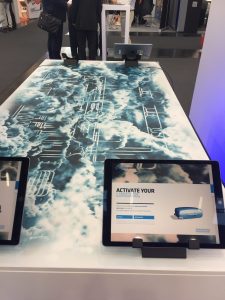
Napier’s visit to the BEUMER GROUP stand was greeted with an impressive display of technological leadership. The forward-thinking team presented an augmented reality set-up which demonstrated the capabilities of BEUMER baggage systems, and what the future of technology-lead airports would look like.
The stand was also turning heads with virtual reality as visitors stepped into a world that immersed them into a real-life, working example which demonstrated the abilities of BEUMER’s tote-based system in allowing complete baggage tracking from drop-off to pick-up.
Napier supported BEUMER’s presence at the show by providing a host of PR activities including messaging, a pre-show press release, setting up meetings with Editors on the stand, and follow-up actions.
Whilst the Napier team worked their way around the exhibition, taking notes of various ideas for the future of the industry, such as the use of autonomous vehicles, it became obvious that as technologies develop and become more accessible, the question isn’t when they will be used, but how soon will they be used?

Attribution... the Key to Understanding the Potential and Impact of our Marketing?
This week at Napier we are taking a look at the State of Marketing Attribution Report 2017, produced by AdRoll.
AdRoll believes that attribution is the key to understanding the potential and impact of our marketing. When dealing with a range of campaigns, it isn’t always easy to figure out what is and isn’t working in order for you to make the correct decisions regarding your business! We are no longer living in an industry when last click or first click is giving us the precise answers we need. AdRoll see this as an opportunity for a new system to arise.
Attribution Put Simply
For those who are unsure here is a simple definition, “In Marketing, Attribution is the process of identifying a set of user actions (“events” or "touchpoints") that contribute in some manner to a desired outcome, and then assigning a value to each of these events”.
The Current Issue
Businesses currently use a simplistic form of attribution which is delaying their decision making. A more detailed form of gathering data should now be used: last click and first click is becoming more irrelevant. A growing number of companies are making the switch over to custom attribution methods, which we also see as a great move.
The use of custom attribution has risen from 31% in 2016 to 39% in 2017. Companies implementing custom attribution on all or most of their marketing activities has risen from 31% to 39%, although North America is outdoing the UK with 51% of businesses implementing the strategy. Companies are currently either carrying out multi-channel marketing attribution strategies or ignoring its potential – this is the last thing that we want! We can see there is uncertainty on how to interpret data, but we don’t want this to be what’s stopping companies from moving forward in terms of attribution.
Types of Attribution
The systems of last click and first click are still the most popular, although their use has decreased, with the adoption of a wider range of methods. Both brand and agency respondents report an increase in custom attribution methods. Custom attribution methods are now seen as being the most effective; 48% of respondents agreed.
When companies were asked if they were actually using multi channel attribution, 60% said they did in comparison to 40% in 2016. Agency respondents stated that algorithm-based methods were most effective but difficult to gather for cross channel journeys.
Impact and Benefits of Attribution
From AdRoll’s research, optimizing media mix was the top goal in 2017. This has overtaken the main priority of 2016, which was understanding the journey and sales cycle. Justifying digital spending was third in line. There is no difference in the list of priorities when comparisons were made between 2016-17. Businesses getting the most out of attribution finally recognize how it is having an impact on their customer contact.
Attribution is said to provide more accountability for marketing, although it is still clear that not all companies are recognizing the positive impact attribution has on building stronger relationships. The respondents stated some of the best outcomes marketing attributions have influenced are, being able to remove activity that doesn’t contribute to customer activity. Having a better view of relative performance on various channels making it possible to relocate any budget to better the campaigns with use of improved resources.
Technology and Effectiveness
Over the years, companies have reduced their confidence in their technology’s ability to support attribution. They have seemingly become more reliant on spreadsheets, vendor technology and custom-built models to carry out attribution. The idea of attribution is to ensure different platforms are able to share relevant data with one another through application programming.
The Challenges of Attribution
One of the biggest issues is the restricted use of marketing attribution due to the lack of knowledge. It is more likely that a business will blame this on the differing data instead of their lack of time. The key to breaking down this barrier is defining the customer journey. This year it has been seen that a more effective use of cross device attribution has undergone, in hope that the right individuals will be employed to take advantage of marketing attribution – although this remains a challenge for many.
A large number of companies blame the lack of technology and too much disparate data. Marketers are struggling to gather the data from different platforms and finding a relevant consistency, there is seen to be a gap in the system somewhere. The report showed that campaign tracking/tagging and statistical modelling were the most frequently selected at 36% and 31%.
Insights to action is the area that was seen as the least biggest issue. Although it is still a problem area, there are other significant challenges to be dealt with first. It is clear that there are benefits of multi channel attribution, but respondents found it difficult to determine which channel delivers return on investment. 28% of respondents strongly agreed that multi-device behavior has increased focus on attribution.
Where do we go from here?
Well, it is clear attribution is moving forward with more effective models in place. Gathering more information and analyzing the customer journey are key elements to understanding how successful a campaign strategy has been. Ensure that you are using your employees’ knowledge to their full potential and that they fully understand the effects of how successful a new approach can be to gathering data.
To learn more, download the full report here.
Personalised Emails are the Way Forward according to Experian Marketing Services
At Napier, we were recently talking about how things in marketing seem to be changing rapidly. But when we took a moment and began discussing personalization we realised this wasn’t always the case.
Back in 2013, Experian Marketing Services released their 2013 Email Market Study report, which formed an analysis of growing trends, stats and proven best practises for how marketers connect with consumers through email.
The most interesting, and seemingly valuable result from this study, was the discovery that personalized emails generate six times higher transaction rates and revenue per email, a significant contrast when compared to non-personalised emails.
The study also revealed that personalized mailings have 29% higher unique open rates and 41% higher unique click rates than non-personalised mailings, with personalised trigger campaigns resulting in more than double the transaction rates. The advantages don’t stop there either, with the study revealing that multichannel retailers are seeing a 37% increase in unique open rates for emails with personalized subject lines.
The study exposed that personalisation was becoming key for marketers, and this hasn’t changed over the years. It seems personalisation has only continued to grow in importance, with consumers beginning to expect content which is tailored to their unique interests and preferences.
For example, within the study, it presented the example of a pop-up to all new visitors on a website inviting them to sign up and receive promotional emails. With marketers using new and inventive ways to collect the information needed for personalisation, it is no wonder why consumers are beginning to expect content tailored to them.
Although marketers have been testing the waters for a while, many still struggle to personalise beyond the name, making their personalisation seem cheesy. Yet these survey results propose a clear case of why marketers should continue to improve and advance their efforts, as with a better insight into how to personalise successfully, marketers will be able to achieve personalisation much more easily in the future.
To discover more and read the full study, please click here.
The Top 15 Things We Learnt at INBOUND 2017
Recently, Napier took a trip to Boston to attend the HubSpot INBOUND conference held from the 25th-28th September 2017. As the biggest INBOUND conference HubSpot has held to date, we took full advantage of the advice and information which was offered to us throughout the event.
We returned home with an overload of information, inspiring us to write the top 15 things we learnt at Inbound 2017.
HubSpot Continues to Improve itself:
The value of look-alike campaigns. HubSpot has added Facebook advertising into the standard product, allowing you to target people who are like your website visitors, and we also had a great presentation about using look-alike audiences when advertising with Google. It’s all about building a sales funnel from the bottom, rather than the top. The next level of retargeting is here now!
Several new integrations were announced at Inbound 2017 one of which was a native integration with Shopify meaning it will be possible to sync products and purchases with HubSpot. They also announced there would be an ecommerce ‘bridge’ for those not using Shopify - HubSpot is aiming to become the platform for a bigger ecosystem.
HubSpot are now taking ‘Delight’ more seriously. A stage of the sales cycle that has been previously overlooked. They are doing this through introducing the ‘Customer Hub’ which was fleetingly introduced at Inbound 2017. Although they may not yet have the software to support this focus on ‘Delight’, the theme of the conference very much seemed to be based around account based marketing and essentially customer retention which again highlights the importance of delighting customers and leveraging this relationship to increase repeat business.
HubSpot’s not the perfect answer for all of our clients, but it’s a blooming good solution for many of them.
Paid channels tend to be more measurable than organic. Rand Fishkin gave a great presentation where he highlighted the fact that paid channels tend to be the most measurable. Because they are revenue-generating, the publishers are giving marketers more data. Marketers believe that the organic/unpaid channels are more effective, yet put more effort and money into paid channels because of the measurability.
The importance of a powerful trajectory. A talk by Rand Fishkin, yes the SEO expert himself, revealed that marketers make the mistake of shutting down blog channels or current marketing activities too early. We learnt that it is important to look over the long-term results of an activity, as often when looking at the estimated growth rate, success can be just around the corner.
Topic clusters are the new way to approach SEO. Not to say that traditional methods should be thrown out of the window – they definitely shouldn’t, but there was a lot of buzz around these topic clusters. The idea being that the clusters make it easier for Google to figure out the significance of the pages within a cluster – architect your site so it makes sense to Google.
Reddit is a great place to steal content ideas! Essentially, you can see what content is doing well and rip it off – I mean, use it to ‘inspire’ your own content ideas. Sub-Reddits get really granular on specific topics, up and down voting allows you to gage popularity and their in-depth search parameters means you can delve deep and gain insight into what is current and popular.
The benefits of a content style guide. HubSpot made the valued point of every business or agency having their own unique style guide, which can be showcased to future clients, whilst being used by our current clients almost immediately.
How to achieve success with content marketing on LinkedIn. From the right call to actions to cohesive and strong visuals, this great presentation revealed how Napier can use compelling content to help our LinkedIn page stand out.
Quality is everything: HubSpot investigated whether the 80/20 rule applies to their blog posts, and found the top 20% of blog posts didn’t produce 80% of the leads. They produced 93% of the leads. It’s the high-quality content that delivers almost all the results. Incidentally HubSpot is now focussing on writing fewer, higher quality posts.
ABM - The Importance of Personalization:
ABM is extremely important. HubSpot hosted many conferences surrounding the subject of ABM. There is a huge focus on nurturing accounts with the Inbound method, and it looks like it is around to stay. With the four main steps: Plan, Create, Nurture and Measure proving to be incredibly successful.
92% of companies recognize the value of ABM and see this strategy as a ‘must have' and B2B organisations that align sales and marketing see a 24% faster growth in revenue. Remember, there are on average, 6.2 stakeholders in the purchasing decisions in B2B organisations – targeting key accounts and moving the account through the buying decision process by having a ‘conversation’ with all stakeholders – personalisation is key!
Personalized emails are a must. HubSpot was able to overhaul their lead nurturing and double their conversions by adding a personal touch to their emails. They pride themselves on creating a human persona who ‘sent’ the emails, in order to form a human connection with their audience.
There are many different things you can do to increase webinar registrations and attendance. The presentation from gotomeeting was great, and we will be using the data to help clients implement tactics that will make their webinar campaigns even more effective. Did you know that 33% of people register for a webinar on the day of the event?
So to End...
Americans and Europeans are different. I didn’t hear one European say they were “super stoked” to be at INBOUND. We were “pleased” to be there, even if we secretly were thinking to ourselves “this is AWESOME”.
Imagination's Jo Ashford - Marketing Expert Interview
As part of our Marketing expert series, we interviewed Jo Ashford, Technology Communications Manager at Imagination. Similar to our previous interviews, we asked a variety of questions, to learn everything we could about our latest marketing expert.
- What do you like to do in your spare time (hobbies)?
I’m a keen baker in my spare time, something which my colleagues, friends and family seem to appreciate. I’d say cupcakes and macaroons are my specialties. I also like going to the gym (probably a good thing considering the baking), photography, cocktails and shopping. Possibly not in that order or as standalone activities/hobbies!
- What food do you like?
Everything except sprouts, swede and oysters! I’m a total foodie and I’ll try everything once, except for Chicken feet. When I was in China I just couldn’t bring myself to try them, even if they do go well with beer!
- What other career would you have chosen if you weren’t in marketing?
If I had my time again, I’d probably do something more creative such as photography. I love capturing moments with my camera, whether it’s the Northern Lights in Iceland or my friend’s kids playing in the garden. I think it would be an interesting career, exposing you to lots of cultures, adventures and experiences.
We then asked Jo to share her future thoughts and insights on marketing, asking her questions surrounding effective campaigns, marketing challenges, and the main activity she would spend an increased budget on.
- What do you think have been the biggest changes to B2B marketing in the past 3 years?
From my perspective, I don’t think looking back at just the last three years highlights how much things have changed in the world of PR, you must go back further to understand the true evolution that has taken place.
- Increased channels. One of the biggest changes in B2B PR is the number of channels that we can now communicate to our audience through. While still highly influential, the media no longer controls everything. Today brands adopted a strategy that embraces both owned and paid media.
- Measurement. When I started out in PR Advertising Equivalent (AEV) was used in all reports when highlighting our successes to clients, along with the volume of press clients. Today, it is a completely different world (and that’s a good thing). Personally, I’m intrigued to see how measuring sentiment will evolve as no one seems to have cracked it yet.
- Social media. Can you imagine a world without Twitter, Facebook or LinkedIn? Like them or loathe them, social media has changed the face of PR, providing a platform for companies to engage with their audiences, while building awareness, credibility and trust. Social media provides a way for customers to directly speak to brands, as well as acting as a targeting tool. A massive game changer in my opinion.
- What do you think will be the biggest change in the way you approach your campaigns in the next 3 years?
- Will press releases still have a role in campaigns?
- Content amplifications will become more critical
- Better campaign measurement will mean more effective campaigns
- What are your 3 biggest marketing challenges?
- Budget. Marketers always seem to be trying to do more with less. Sadly, I don’t think this will ever change as budgets will always be squeezed BUT on the positive side, I do think it breeds creativity.
- Measuring ROI. Tracking the ROI of every singly marketing activity isn’t always easy or possible.
- Reaching customers in a meaningful way. Today audiences are exposed to so much noise it can be hard to cut above the rest and deliver meaningful information that resonates with them on a one-to-one level and ultimately, converts leads into sales.
- Describe the future of the trade media - will it thrive or do you think there are problems ahead?
The debate about the future of media in the digital age has often been dominated by the fate of national newspapers. I believe often the future of trade magazines has been absent from the discussion. Many assume that, “if the nationals can’t make it, what hope is there for trade magazines?”
While it’s difficult to generalise about the future of trade magazines because each sector has its own unique set of challenges and opportunities, I do think they have a future. I believe that trade magazines are well placed to identify their respective niches and utilise them. It comes down to how Editors package their offering while ensuring they are profitable businesses. Quality editorial is not enough, sadly.
- What is the most over-hyped marketing tactic?
Mobile marketing. While mobile devices have grown massively in popularity in the last few years, it doesn’t mean that traditional PCs will become obsolete in the next few years. Desktops still serve some important purposes and have advantages that cannot be matched by devices with smaller screens. It’s crucial that businesses understand this and don’t get swept away by the idea that mobile devices and mobile advertising are the absolute future of online marketing. While it’s good to have a responsive website that can be viewed equally well on all devices, it’s important that business don’t put all their efforts into a mobile website. At least for the foreseeable future, users on devices of all shapes and sizes will be checking out your website.
- What was the best campaign you've run?
The campaign that I’m most proud of was for Sensus, who were bidding for the GB smart meter programme. Compared to the likes of Vodafone and O2, they were considerably smaller in terms of budget but their product was better. However, they had limited experience in EMEA. I developed key messaging that appealed to all the audiences involved in the decision-making process, playing on Sensus’ strengths and highlighting the weaknesses of their competitors. The campaign lasted five years and resulted in Sensus winning one of the three regions that were up for grabs. That was a good day in the office.
- If there is one thing you could change about the electronics press, what would it be?
To be honest, nothing. I know that sounds like a rubbish answer but they are a nice bunch and so far, they have been easy to work to. Ultimately, if do my job properly and get them interesting and timely news then all will be fine.
- If there was one thing you could change about how agencies work with you, what would it be?
Having been agency side for several years before going in house, my advice would be simple. Make the client’s life easier, don’t add to their workload but make it lighter. Make yourself invaluable so that your client can’t live without you and they’ll love you forever.
- How important will social media be for your campaigns in the next 3-5 years?
Social media is very important to our campaigns at Imagination and that’s only going to increase. For me, I see social media as a more informal way of engaging with customers and prospects and educating them on who we are and what we’re doing. If they have a question, they can ask us directly and get an honest and informative answer. I see that being more important in the coming years.
- If you could get more budget, what activity would you spend it on?
Video content. Yes, content is still king but the kind of content the rules the web is changing. People are busy and don’t always have time to read a 1500-word opinion article or whitepaper. Let’s make life easier and give them more digestible content that they can consume when they like, on any device that they like. Let’s tell a story that can come to life through visuals and truly catch their attention.




